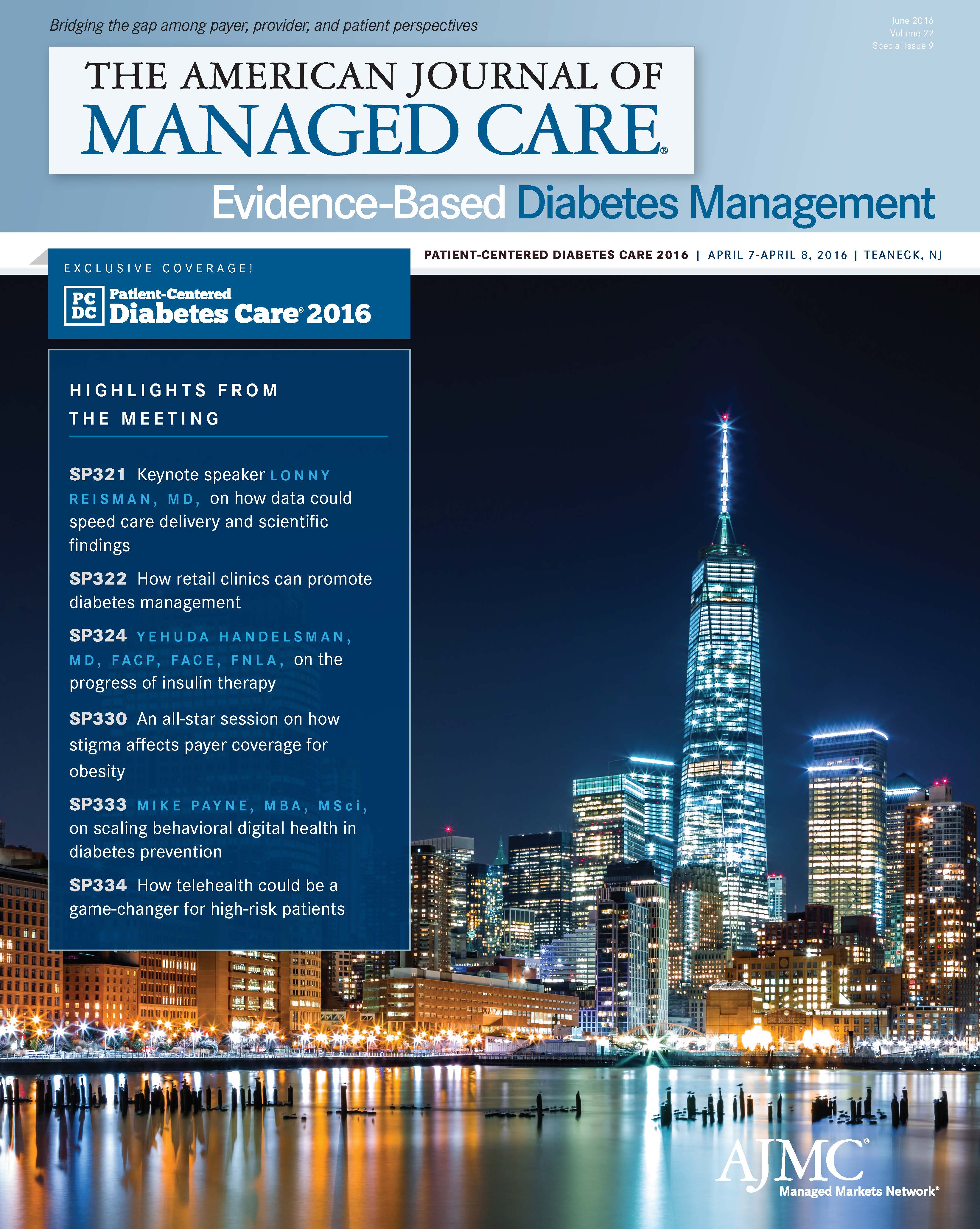- Center on Health Equity & Access
- Clinical
- Health Care Cost
- Health Care Delivery
- Insurance
- Policy
- Technology
- Value-Based Care
Collaborative and Convenient Care: Reevaluating Approaches to Diabetes Management
Coverage from Patient-Centered Diabetes Care, April 7-8, 2016. Presented by The American Journal of Managed Care and Joslin Diabetes Center.
Kristene Diggins, DNP, FAANP, MBA, emphasizes the importance of collaborative diabetes medication management with both pharmacists and patients, especially in convenient care settings. Patients value convenience over quality, which means that offering the option for retail care, also known as convenient care, is essential to maintaining population health.
“We can give convenience and quality, but when we think about ‘what is the challenge with diabetes management?’ it is the lack of convenience in caring for the multifaceted aspects of diabetes,” explained Kristene Diggins, DNP, FAANP, MBA, manager of professional practice at the Minute- Clinic. Diggins outlined the problem of medication adherence, a major challenge in diabetes care: approximately 40% of chronic disease medications are not refilled, because when a patient no longer experiences the symptoms that the medication targets, he or she may no longer see the need for the pill. Instead, she said, people see an opportunity to save on their grocery bill.
Convenient care settings help because they allow a patient to come in for a minor issue or a routine checkup, and physicians can tell from the electronic health record whether the patient has other chronic conditions. This presents an opportunity to discuss the condition and to better educate a patient about their treatments, according to Diggins. The physician may bring up lifestyle changes, behavior modifications, and interview the patient about what works and what does not.
Care is enhanced when it includes collaboration, and Diggins said that collaborating with pharmacists is vastly underestimated. She likes working with pharmacists because they understand the side effects, the cost effectiveness, and the best time of day to take medications. An important technique health plans should consider is pharmaceutical counseling—also known as medication management. This process allows pharmacists to recommend which medications be combined to make adherence easier for patients taking multiple medications. Pharmacists can also see which medications the patient is not refilling and explain why that medication is important. These efforts generally lead to greater compliance. Diggins cited a study from JAMA where one outpatient practice had a full-time pharmacist, and the hospital endorsed it because it kept admissions down.1
Collaborative care also means patient-centered care, in which the patient is involved in the decision making. Providers must use language patients understand. “Diabetes is complex enough for us with all of our degrees and all of our background,” Diggins said. “How in the world do we expect our patients to understand the continually changing nuances of these conditions?”
Collaborative care starts with the patient owning and understanding his or her condition, she said. Providers are partners, but the goals should be identified by the patient, not by the provider. To accommodate this way of thinking, Diggins said providers must see patients as customers. One example of this outlook is how providers approach follow-ups.
“The minute we start scheduling, what we find is we give up the core competency of convenience,” she said. “So the truth is, what we have found works best is follow up by phone call.” Providers can ask whether or not a patient has met with the primary care provider (PCP), and if not, recommend a PCP in the area.
Patients prefer convenient care; they are more inclined to adhere to treatments or pursue follow- up if this happens on their schedule. Diggins added that while physicians may be providing the necessary information to patients, they must make sure it is understood. Ultimately, patients make their day-to-day decisions as they interpret the information—and this can be affected by a person’s culture, education, or health literacy level.
“And so no matter what setting you work in, you realize that this is a challenge,” she said. “In convenient care, we know that while we list services that we’re providing, that’s not actually what we end up doing.”
Diggins warned that Americans have become complacent toward diabetes, and this applies to both patients and clinicians. As such, it is important to reevaluate current approaches to diabetes management and how they can be made more effective. This includes a focus on a convenient care setting and involves collaboration with both pharmacists and patients.
1. Lee JK, Grace KA, Taylor AJ. Effects of a pharmacy care program on medication adherence, persistence, blood pressure, and low-density lipoprotein cholesterol: a randomized control trial. JAMA. 2006;296(21):2563-2571.

Trends in Hospital Pricing for Vulnerable Emergency Department Users, 2021-2023
December 4th 2025Self-pay emergency department prices rose significantly from 2021 to 2023, especially at for-profit and system-affiliated hospitals, highlighting growing affordability challenges for uninsured and underinsured patients.
Read More
Blister Packs May Help Solve Medication Adherence Challenges and Lower Health Care Costs
June 10th 2025Julia Lucaci, PharmD, MS, of Becton, Dickinson and Company, discusses the benefits of blister packaging for chronic medications, advocating for payer incentives to boost medication adherence and improve health outcomes.
Listen

